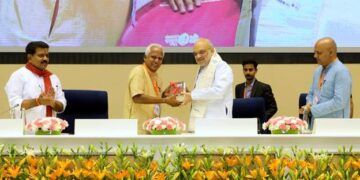Education in Kashmir stands today at a decisive crossroads. On one side is the hopeful rise of the National Education Policy (NEP) 2020, embraced with remarkable seriousness by both government and private schools. On the other is the abrupt fall of the Falah-i-Aam Trust (FAT) schools, once the backbone of affordable and moral education in the Valley, now taken over by the state. Together, these two developments reflect the paradox of Kashmir’s classrooms a dawn of reform shadowed by a sunset of legacy.
The NEP 2020 promises to liberate education from rote learning, infuse it with creativity, flexibility, vocational exposure, and holistic development. It offers the possibility of equity where a child in a rural government school may finally enjoy the same opportunities as one in a private elite institution. For parents and teachers long tired of outdated syllabi and narrow pedagogy, it is a breath of fresh air, a new dawn that has been awaited for decades.
Yet the takeover of FAT schools has cast a long and troubling shadow. For over thirty years, FAT was not just an institution but an idea a movement of education for the middle class and the poor. Families of modest means found dignity there, paying minimal fees to educate their children. Orphans were admitted freely. The poorest were given top-class education without charge. FAT schools produced disciplined students with a unique balance of academics and moral grounding, and their impact was vast: it is said that nearly a third of Kashmir’s public servants today are alumni of these schools. FAT was, in essence, a parallel board to the state—an agency of the people, for the people.
A telling anecdote reveals their reach: a Kashmiri Pandit youth, a product of a FAT school, once astonished his peers by fluently reciting Quranic surahs he had memorized in class. When asked why, he replied simply that his elders had insisted he join FAT, for it gave not only academic education but also moral strength. That a Pandit child could so naturally absorb Islamic verses reflects the inclusive ethos and quiet power of these institutions. But political anarchy and suspicion caught up with FAT. Alleged links with banned groups pushed it into the crosshairs of the state, and now its schools stand absorbed into government hands.
The logic of regulation is understandable; schools must conform to constitutional values, financial transparency, and standard curricula. Yet the blunt instrument of takeover risks erasing decades of community-driven service. Parents now worry not about access to textbooks but about the slow death of moral education, discipline, and the sense of belonging FAT once nurtured. The irony is bitter. At the very moment when NEP 2020 advocates community participation, flexibility, and holistic growth, Kashmir loses one of its most successful community education networks. Reform, instead of embracing, has replaced and erased.
A wiser course was possible. Rather than taking over, the government could have created a strong regulatory mechanism, ensuring transparency while allowing FAT to continue its service. Every institution has its character, and FAT’s character was precisely what made it irreplaceable: low-cost education, high academic standards, and moral anchoring. By dissolving it into bureaucracy, there is a risk that Kashmir’s classrooms will gain compliance but lose soul. The future will decide whether this was dawn or eclipse. If the state preserves FAT’s legacy and merges it meaningfully with NEP’s vision, the takeover may yet prove a bridge between old service and new reform. But if the takeover leads to erasure, Kashmir will remember it as the end of moral education and community-led schooling.
Kashmir today lives between two metaphors: the sunrise of NEP 2020 and the sunset of FAT schools. One brings hope of progress and innovation, the other leaves behind loss and memory. Together they remind us of an uncomfortable truth—education here is never just about classrooms. It is about identity, morality, politics, and the destiny of an entire people.
Author can be reached at umairulumar77@gmail.com





